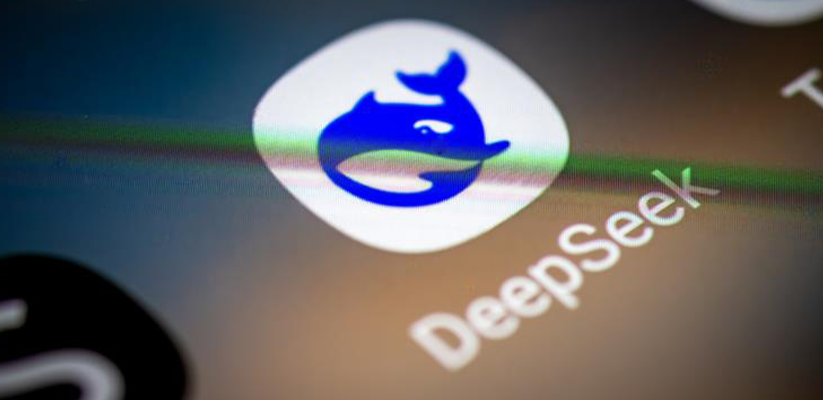
March 28, 2025
Leveraging DeepSeek for Automated SQL Query Generation
Imagine asking, Who joined up last month? and receiving the correct SQL query to extract the data. Instant results without syntax or SQL clauses. DeepSeek is powerful.
I know how difficult writing complex SQL queries is, particularly under deadlines. DeepSeek's natural language SQL query generation changes the game. Today, we can define our needs in clear English and let AI do the work. This tool helps accelerate your productivity whether you are a longtime developer or new to databases.
What is DeepSeek?
DeepSeek uses AI to turn natural language into SQL queries. Imagine a link between human intent and machine-readable code. It rapidly produces SQL statements for queries like Find all customers who made a purchase in the previous week.
DeepSeek's context understanding makes it strong. It knows the goal and improves SQL, not just keywords. This makes it easy to make complex queries that use joins, aggregates, and conditions.
How DeepSeek Automates SQL Query Generation
The brilliance of DeepSeek is its deep learning models, trained on massive SQL query datasets. It generates correct SQL statements in seconds from natural language prompts using AI.
As an example, I could just ask DeepSeek: List all people who signed up last month.
from deepseek import DeepSeekCode
prompt = "Write an SQL query to get all users who signed up last month."
response = DeepSeekCode.generate(prompt)
print(response)
DeepSeek would return something like this:
SELECT * FROM users
WHERE signup_date >= DATE_SUB(CURDATE(), INTERVAL 1 MONTH);
There you have it. You do not have to worry about grammar mistakes or missing conditions. Simply a simple, usable SQL query written in regular English.
Let's look at another example. Let's say we need to get back all orders placed in the last week:
prompt = "Generate an SQL query to fetch all orders from the past 7 days."
response = DeepSeekCode.generate(prompt)
print(response)
This could lead to the following SQL query:
SELECT * FROM orders
WHERE order_date >= DATE_SUB(CURDATE(), INTERVAL 7 DAY);
Let's take it a step further now. What if we want to know how many people are active users in the last 30 days?
prompt = "Write an SQL query to count active users in the last 30 days."
response = DeepSeekCode.generate(prompt)
print(response)
Output:
SELECT COUNT(*) FROM users
WHERE last_login >= DATE_SUB(CURDATE(), INTERVAL 30 DAY);
Handling Joins and Complex Queries with DeepSeek
DeepSeek can do more than just simple queries. It can also generate queries that use GROUP BY, ORDER BY, and JOIN.
Let's say we need a report that shows how many orders each person has made in the past month:
prompt = "Write an SQL query to get the total orders per user for the last month."
response = DeepSeekCode.generate(prompt)
print(response)
Expected SQL output:
SELECT users.id, users.name, COUNT(orders.id) AS total_orders
FROM users
JOIN orders ON users.id = orders.user_id
WHERE orders.order_date >= DATE_SUB(CURDATE(), INTERVAL 1 MONTH)
GROUP BY users.id, users.name
ORDER BY total_orders DESC;
In the same way, if we want to get the top 5 people who spend the most:
prompt = "Generate an SQL query to fetch the top 5 customers with the highest total spending."
response = DeepSeekCode.generate(prompt)
print(response)
DeepSeek might return:
SELECT users.id, users.name, SUM(orders.amount) AS total_spent
FROM users
JOIN orders ON users.id = orders.user_id
GROUP BY users.id, users.name
ORDER BY total_spent DESC
LIMIT 5;
Advantages of Using DeepSeek for SQL Query Generation
One of DeepSeek's main benefits is time savings. This type of SQL query takes longer to write. With DeepSeek's instant, and accurate results, you can skip this trouble.
Having fewer mistakes is another benefit. Even people who are very good at SQL can miss grammar mistakes or important situations. To cut down on mistakes, DeepSeek makes searches that are exact and well-structured.
It also simplifies SQL for non-technical users. Business analysts, marketers, and data scientists may not be comfortable with SQL yet need to retrieve data. DeepSeek gives them insights without developers.
Beyond that, productivity increases undoubtedly. Instead of spending hours developing and debugging SQL statements, developers may improve queries, performance, and data analysis.
Potential Challenges and Limitations
DeepSeek is capable but has major downsides. Complicated query accuracy is a problem. Although it can handle basic queries, nested subqueries and custom business logic may test it. Critical apps require manual evaluation.
Another drawback is training data reliance. Without database structure or industry-specific queries, the model's output may require fine-tuning.
There is also the issue of security. Unmanaged automatic query creation can cause SQL injection. Before applying AI on sensitive data, check queries.
Conclusion
DeepSeek is transforming database interaction. Natural language to SQL queries lowers challenges, boosts productivity, and simplifies data retrieval. It is not flawless and needs human monitoring, but it saves developers and analysts time and effort, making it priceless.
Now is the moment to try AI-powered SQL query creation. DeepSeek proves AI can speed up, simplify, and make database administration accessible to anyone.
52 views
